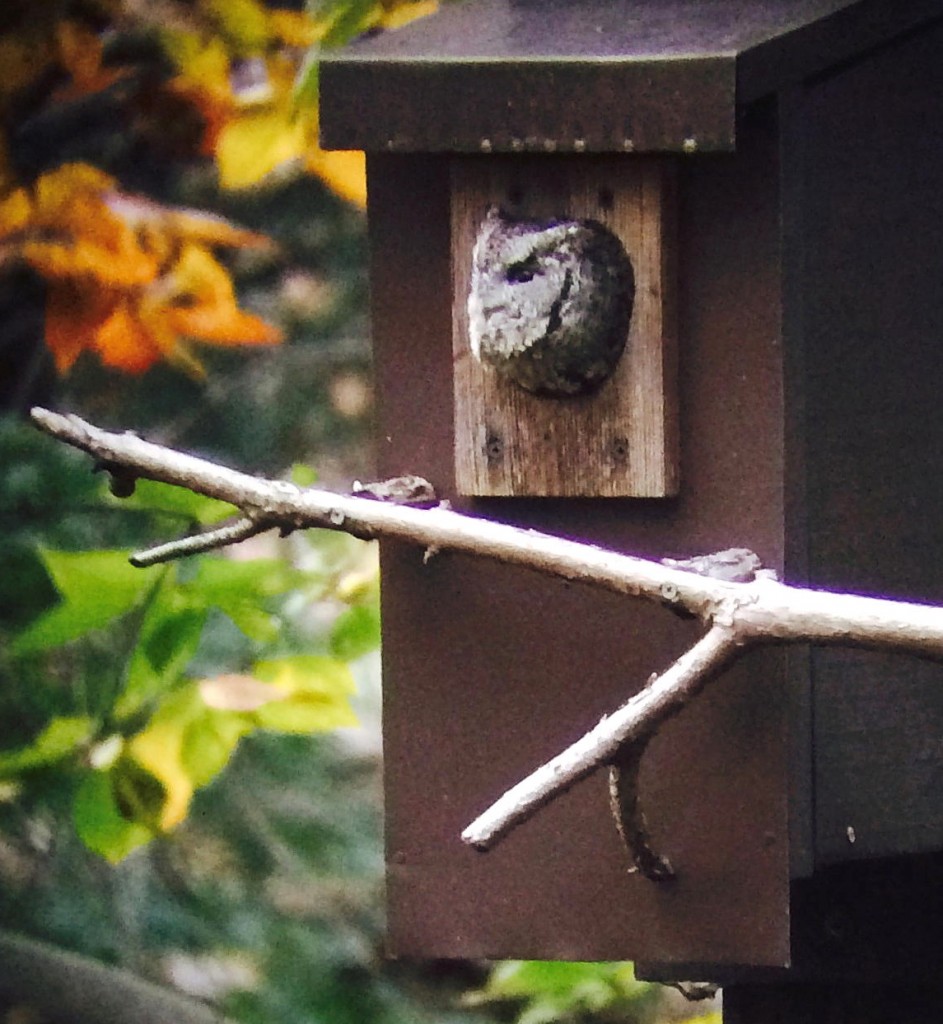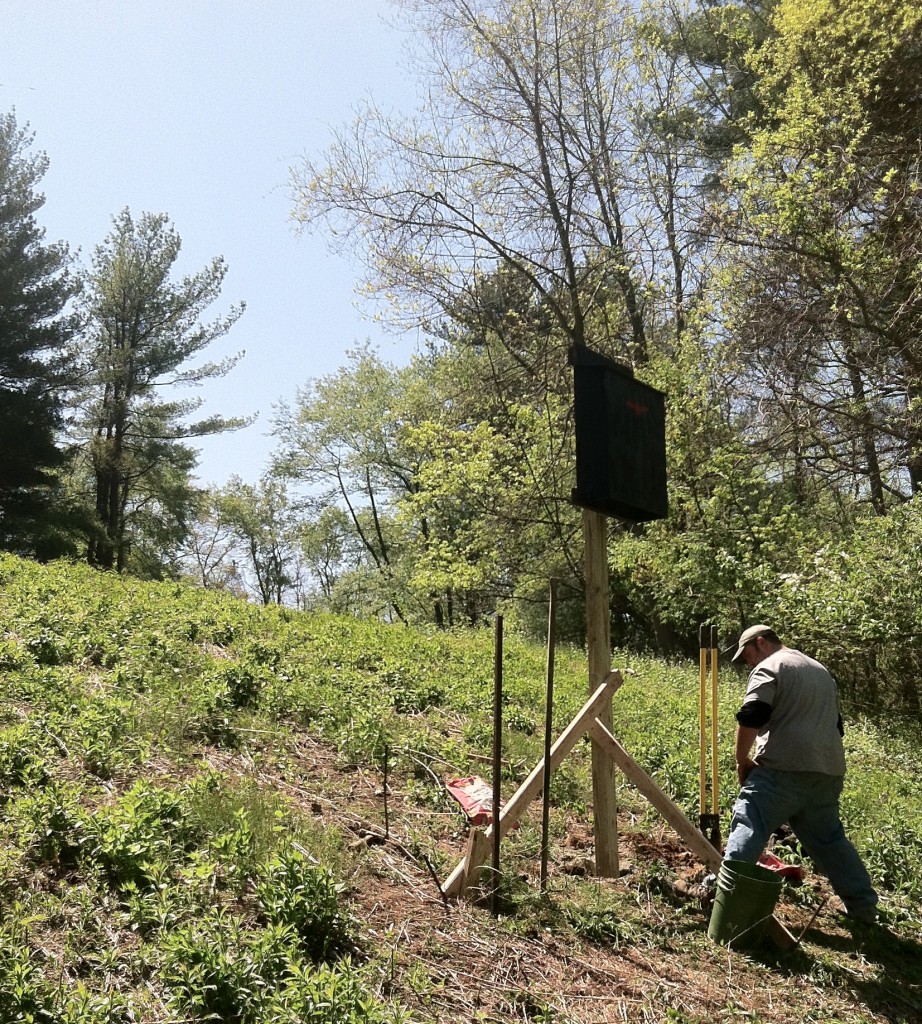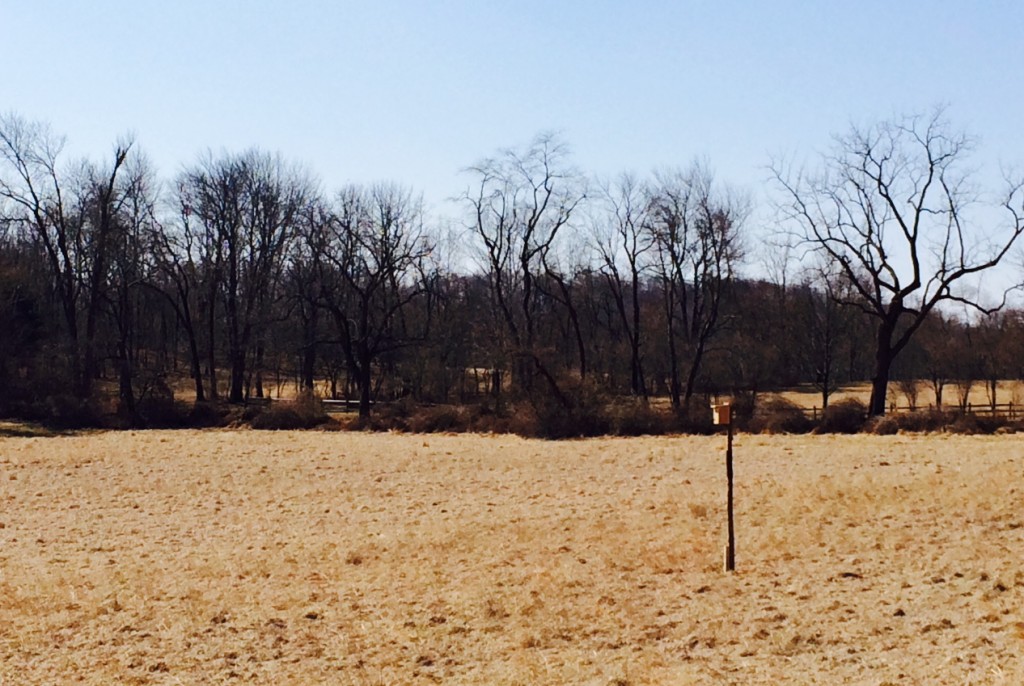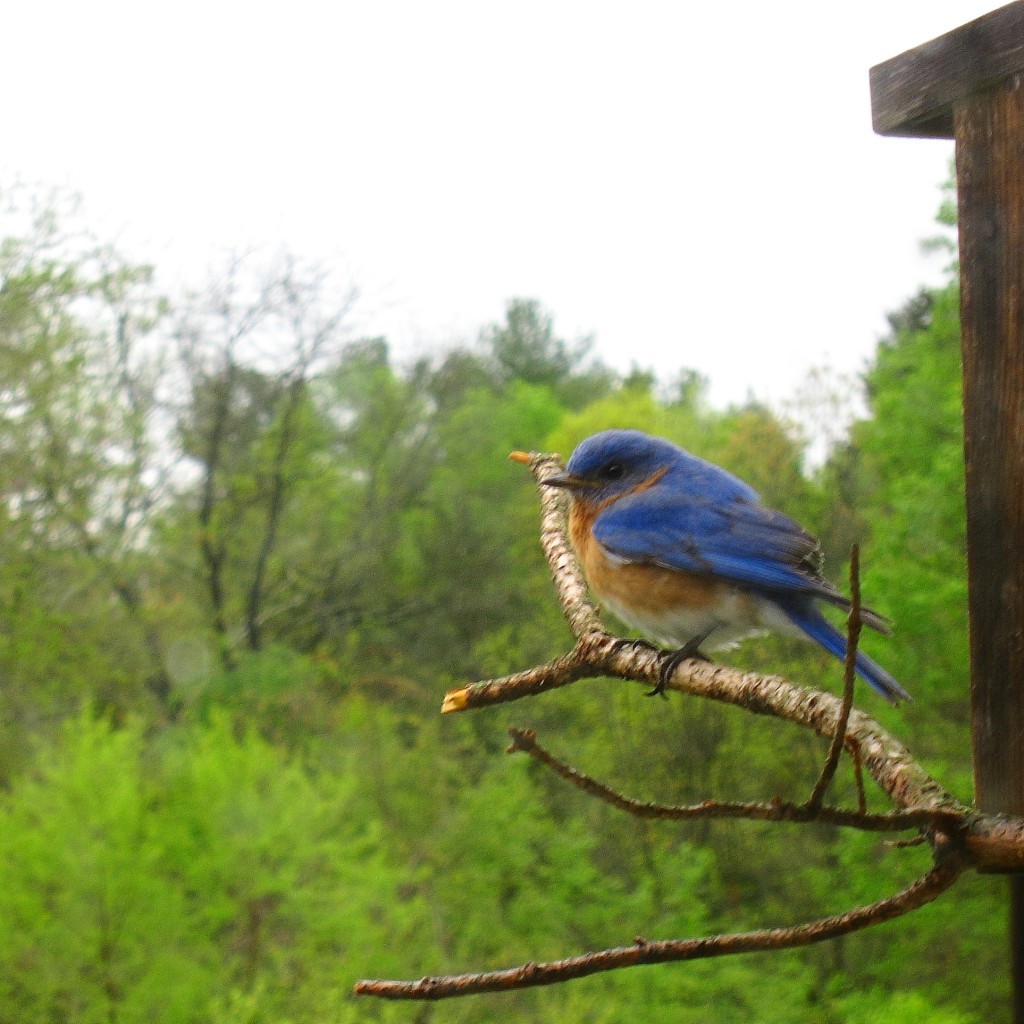Hildacy Preserve: Nest box work
By Michael Coll, Hildacy Preserve Manager
As April approaches, it is the last chance to prepare nest boxes for the return of migrant species. Throughout the next few months, breeding pairs will be searching for nesting locations and attention to detail within each nest box installation can be the difference between successfully attracting the target species and simply placing a wooden box in the landscape.
The first new box that I put up this year was a Wood Duck box near the restored wetlands at Hildacy Preserve. The box was well constructed by a volunteer and on the opening now sits more than 8 feet off the ground. I have used two wraps of metal flashing around the wooden post to hopefully prevent intrusion into the box by nesting squirrels and potential predators.
My choice of location for this box was motivated by two separate ideas. The first is as a potential nest spot for Wood Ducks. Each year around this time I observe a few Wood Ducks visiting the wetlands (in fact there is a pair there now as I write this). The birds are present for a few days or weeks, most likely feeding on the abundant plant life and insects in the wetlands, and then go somewhere else for the bulk of the breeding season. I suspect these wetlands might be just a bit too busy for Wood Ducks to feel secure. Different species are affected differently by the presence of humans and Wood Ducks tend to prefer a more secluded setting than, say, Mallards, which often don’t seem bothered by people at all. However, it is also possible that these passing ducks haven’t stayed because there were no suitable cavities in which to nest. If this is the case then perhaps they will make use of this new box. I placed it as far from the main walking paths as the area allowed. The placement was also determined by the idea that it could be easily observed. I have put other Wood Duck boxes up in considerably more secluded locations on Hildacy and in fact these locations are so secluded that I have not properly monitored them and so I do not know if they have been used!
The second purpose for this box is as a possible secondary home for my resident Screech Owl.
I have read that breeding Screech Owls will sometimes seek out secondary roosts near their nest sites. Perhaps when a small box becomes full of young fledgling owls it is nice to have somewhere nearby for the adults to sleep. Because Screech Owls will sometimes use Wood Duck-sized boxes, I thought that placing this new box in a direct line of sight with the existing owl box could possibly serve that purpose (assuming it is not occupied by Wood Ducks).
For the past two years, a Screech Owl has roosted throughout the winter in a box about 100 yards away. I have a working camera in the box and, as I write this, he (I believe it’s a male) is sleeping the day away inside.
Each spring when breeding season arrives for Screech Owls, I have heard the male calling from the opening of the box, but I have never observed a mate. A few weeks later, the owl leaves the box (presumably to breed somewhere else) and doesn’t return until the fall. I hope that this year the presence of a secondary roosting spot will change this pattern and convince a pair to nest.
Another project that I crossed off my list recently was to increase the height of my bat box. Originally this large, heavy (sail like) box was attached to a 12’x4”x4” post that was set into the ground with cement.
With a few feet of the post buried in the ground, the opening of the box (which is on the bottom) was barely more than 7’ high. The recommended height for bat boxes is no less than 10’ and higher is preferable. I had hoped that placing it on a slope would help to make up for this, but after seeing it go vacant last year I decided to cut the existing post and add a second 12’ post, attached by carriage bolts at the top and bottom. This addition raises the opening of the box to over 13’.
Hopefully, this will make the box more attractive to bats since its current location hits nearly all of the other recommendations for placement including: distance from trees (25 ft), proximity to water (stream and wetlands), good sun exposure, and south facing in an area where bats are regularly observed.
Last year was a banner year for Kestrels at Natural Lands preserves with nesting pairs in boxes at both Gwynedd Wildlife and Hildacy Preserve. I am hopeful that the Kestrel box at Hildacy will soon be inhabited again by these small, brightly colored falcons.
In that aim I have cleaned the box that was used last year (including scraping the interior walls, which the fledglings seemed to have painted white!) and replacing the bedding with new wood chips.
In addition I have added another Kestrel box at our Summerhill Preserve. I have previously observed breeding Kestrels on this preserve (I saw fledgling birds but never found the nest site). However, last year–possibly due to a nearby “forest cleanup” that removed some old standing dead trees–I did not see any young birds. It seems likely that the pair’s nesting cavity was destroyed, which makes Summerhill an ideal location for a box. With any luck, the pair will find the box and breed successfully in the next few months.
The box was constructed by Force Of Nature volunteer Brian Bernero, who mounted it on a natural cedar post. To extend the length of the natural post we bolted it to a mostly buried 4”x4” making the final height of the box’s opening more than 12’ off the ground. Metal flashing was again used as a predator deterrent. The box faces south and is in a warm-season grass meadow that is rich with prey and removed from human disturbance.
The last of the nest box preparations were performed by other members of our Force Of Nature team who have cleaned out all of the 44 Eastern Bluebird boxes at Hildacy and Summerhill. While many of these boxes are used each year by Tree Swallows, Chickadees, and House Wrens, bluebirds continue to find boxes to nest in as well. Last year, volunteer monitors reported seven successful bluebird nests at the two preserves yielding 31 fledglings. This year, I will change the location of the boxes that were dominated by House Wrens in an effort to discourage them. I will also be continually mowing small areas around some of boxes that are in the warm-season grasses. It is possible that by keeping the grass height lower, more bluebirds will return to attempt a second brood.










